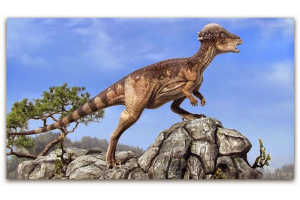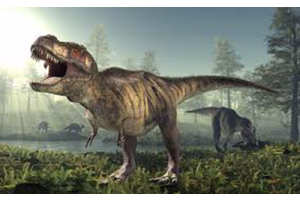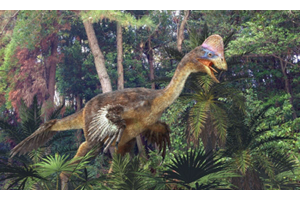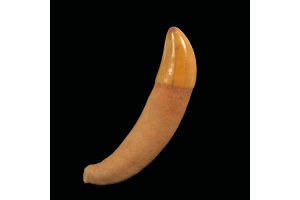Page 6 - Blog
- - August 05, 2025
Beneath the glassy surface of the world's oceans lies a realm untouched by time. Long before humans walked the earth, prehistoric beasts reigned beneath the waves—among them, the colossal megalodon. This ancient predator lived during the Miocene and Pliocene epochs and is believed to be the largest shark to have ever existed. For centuries, scientists and collectors have been captivated by the stories its fossilized remains tell. One such story recently resurfaced in spectacular fashion.
With the megalodon tooth found off the coast of Chile—one of the largest ever unearthed—experts were given a rare glimpse into a time when the seas trembled under the might of a marine behemoth. The tooth, both massive and beautifully preserved, has sparked a renewed fascination with the enigmatic ruler of the ancient oceans.
The Mighty Predator of Prehistoric Seas
To understand the impact of such a find, we must look back into history, millions of years ago, to a time when the oceans looked different,
- - August 05, 2025
If you’ve been browsing fossil forums, scrolling through toothy treasures on niche marketplaces, or whispering excitedly at a fossil fair booth (we’ve all been there), you might’ve noticed something curious. While giant Megalodon teeth still steal the spotlight and the price tags to match, there’s a new obsession quietly taking hold among seasoned fossil collectors: the small ones. And no, this isn’t about settling for less — this is about getting closer to the untold story of a prehistoric giant in a whole new way.
We’re talking about the small Megalodon tooth that’s turning heads and starting hushed conversations between collectors who know a good thing when they see it. So what’s the deal? Why are these petite chompers suddenly the new darling of the Megalodon world? Let’s dig in.
Not Just a Shrunken Giant
At first glance, the fascination might seem puzzling. Megalodon, after all, is synonymous with big — the kind of jaw-dropping size that makes your palm feel insignificant holding
- - August 05, 2025
It begins with a single fossil—cold in the hand, serrated at the edge, shaped by time into a symbol of prehistoric dominance. One glance is enough. The texture, the weight, the silent story embedded in its enamel—it captures attention, then obsession. That’s the moment it happens: the realization that this belongs not in a museum, but in your personal collection.
You wouldn’t be the first to feel it. Interest in megalodon shark teeth for sale hasn’t simply risen—it’s surged. Not because a trend told people to care. Because the fossil itself did. Because once someone sees that heart-shaped shard of marine terror, they don’t forget it. It doesn’t politely suggest. It declares, with quiet certainty: I once tore through whales.
That is all it takes. From that moment forward, these teeth vanish from our inventory at a pace that rivals the predator that created them.
The apex predator of apex predators
The Megalodon was not merely large—it was a true apex predator, unparalleled in prehistoric
- - August 05, 2025
When we examine a Lee Creek Megalodon tooth, our attention is instantly drawn to the incredible patina that covers its surface. This unique combination of hues and textures is one of the most striking aspects of the fossil, and we take pride in offering specimens that tell such an incredible story.
The patina is not simply decorative. It provides valuable insights into the fossilization process and helps us understand the geological environment, the age, and the conditions that led to such remarkable preservation.
A Journey Through Time: The Geological Origins
The Lee Creek phosphate mine in Aurora, North Carolina, has long been a world-famous location for fossilized shark teeth. These fossils are found in two ancient formations:
● The Pungo River Formation dates back to the Miocene epoch, approximately 15 million years ago.
● The Yorktown Formation is from the Pliocene epoch, about 4.5 million years old.
The phosphate-rich sediments of these formations have been ideal for preserving
- - August 05, 2025
Before museums or coin collections ever existed, ancient humans may have prized something even more captivating—a massive tooth from the king of sharks. These weren’t just fossils; they were symbols of power, mystery, and survival. Today, that same fascination lives on through collectors who cherish each serrated relic. A genuine megalodon tooth fossil isn't just a find—it's a link to a time when giants ruled the sea.
Prehistoric Souvenirs from the Deep
Long before coin hoards, baseball cards, or comic books fascinated collectors, our ancestors might have held on to something just as mesmerizing—giant fossilized teeth from the king of ancient seas: the Megalodon. These massive shark teeth, buried in sediment for millions of years, may have been the first "collectibles" for early humans, not for their monetary value, but as tools, symbols, or talismans.
The idea that a megalodon tooth fossil could hold value across multiple eras bridges an extraordinary connection between ancient civilizations
- - August 05, 2025
What if the key to understanding one of Earth’s most awe-inspiring sea predators was resting in the palm of your hand? That’s the intriguing possibility paleontologists face when they study a big Megalodon tooth. These fossilized remnants are more than just relics—they’re time capsules offering a glimpse into the world of the Megalodon, an enormous prehistoric shark that ruled the oceans millions of years ago. But how can just one tooth reveal so much?
Let’s dive into how researchers use these ancient teeth to piece together the story of the Megalodon’s life, diet, and ultimate extinction—and how you can tell if you're holding the real deal or just a clever imitation.
Why Are Megalodon Teeth So Valuable to Science?
While most of a Megalodon’s body was made of cartilage (which doesn’t fossilize well), its teeth were built to last. These massive, serrated structures are among the only surviving clues to this prehistoric predator’s existence. And because a single Megalodon could shed
- - August 05, 2025
Few fossils stir the imagination quite like the massive, serrated teeth of the Megalodon. These prehistoric remnants continue to captivate us, not just for their size, but for the secrets they reveal about a long-extinct ocean predator. From scientific discoveries to cultural legends, Megalodon teeth hold a special place in our collective curiosity. Their enduring allure speaks to our fascination with the unknown depths of Earth’s history.
A Prehistoric Predator That Still Captivates the Imagination
There’s something undeniably gripping about holding a fossil in your hand—especially when it’s a serrated, heart-shaped tooth from a predator that once ruled the oceans. The Megalodon, whose name literally means "big tooth," swam Earth's oceans over 3 million years ago, and yet its fossilized remains—particularly its teeth—continue to fascinate scientists, fossil collectors, and curious minds alike.
These prehistoric remnants have inspired countless documentaries, books, and collections. For
- - August 05, 2025
There’s something undeniably captivating about holding a piece of prehistory in your hands—especially when that piece once belonged to a creature the size of a city bus, armed with the most powerful bite in natural history. For collectors, scientists, and even interior design enthusiasts, fossilized shark teeth—particularly those from the Megalodon—have become treasured artifacts, often commanding prices in the thousands. But what’s driving this fascination?
As collectors ourselves, we understand that it’s more than just the price tag or bragging rights. From scientific rarity to visual intrigue, a megalodon tooth is more than a fossil—it’s a conversation starter, a museum-worthy display piece, and a literal slice of ancient life.
The Legend of the Megalodon: A Giant Among Sharks
Before we dive into the collecting world, it’s worth appreciating the beast behind the bite. The Megalodon shark was an oceanic juggernaut that lived between 23 and 3.6 million years ago during the Miocene
- - August 05, 2025
If you’ve ever walked along the beaches of North Carolina and spotted a large, triangle-shaped tooth buried in the sand, you might have just discovered something truly ancient—a megalodon tooth. These massive fossilized teeth are more than just beach treasures. They are clues to the past. But why do so many of them wash up on North Carolina shores? Let’s dive in.
A Prehistoric Predator and Its Teeth
Millions of years ago, the oceans were ruled by a giant shark called Otodus megalodon. This predator could grow over 50 feet long. It had a mouth filled with huge, serrated teeth. One tooth could be over 7 inches long!
The megalodon didn’t just have big teeth—it had thousands of them. Like modern sharks, it constantly sheds old teeth while growing new ones. Over a lifetime, a megalodon may have lost tens of thousands of teeth. These teeth dropped to the ocean floor, where many got buried by sand and sediment.
Why the Coast of North Carolina?
Now let’s talk about why so many megalodon teeth
- - August 05, 2025
The Megalodon, often called the king of ancient seas, is one of the most fascinating sharks to ever live. This giant predator ruled the oceans for millions of years before going extinct. But what if it didn’t? What if the Megalodon still existed today? This question sparks the imagination of many shark lovers, collectors, and scientists. It’s thrilling to think about how our oceans and our world might look if this ancient giant still swam beneath the waves.
In this blog, we’ll take a deep dive into the possibilities, from the impact on the food chain to how we might interact with such a powerful creature. If you’re someone who loves collecting fossils, especially an authentic megalodon tooth, you’ll find this journey into “what if” both exciting and thought-provoking.
Understanding the Megalodon
Before we imagine today’s world with a living Megalodon, let’s take a quick look at what we know about it. The Megalodon lived around 23 to 3.6 million years ago. It was the largest shark ever







